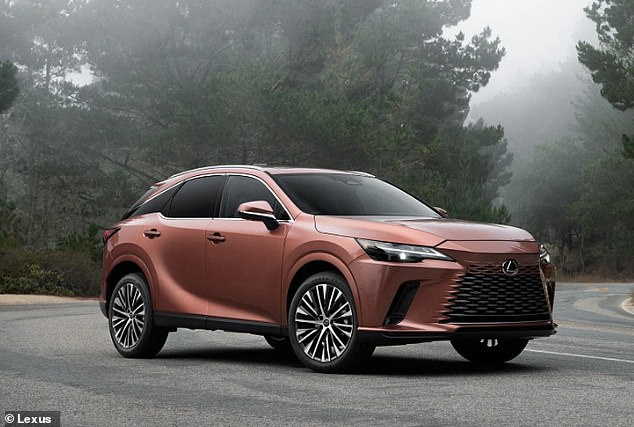- Luxury car tax to punish hybrid car buyers
- This is due to an ultra-strict fuel efficiency standard.
Australians who buy a hybrid car will be hit as Labor applies the luxury car tax to vehicles that still use petrol.
The new luxury car tax rules will come into effect on July 1, 2025, meaning cars selling between $76,950 and $89,332 will attract the luxury car tax unless the vehicle uses less than 3.5 liters per 100 km.
Hybrid cars typically consume more than five liters per 100 km, which means they will incur the 33 percent tax on luxury vehicles.
This will punish those who buy a Toyota Kluger sells for $80,230, Mazda CX-60 sells for $88,800, and Lexus RX 350h is priced at $87,500.
Labor is seeking to punish drivers of hybrid, petrol and diesel vehicles in a bid to encourage drivers to buy an all-electric luxury car such as a Tesla Model Y, as part of a plan to reduce carbon emissions by a 43 percent by 2030.
Australians who buy a hybrid car will be hurt as Labor applies the luxury car tax to vehicles that still use petrol.
Treasury Budget documents forecast the luxury car tax would raise $1.2 billion in 2025/26, rising to $1.27 billion in 2026/27 and $1.33 billion in 2027/28.
Existing rules make fuel-efficient luxury cars, which sell for more than $76,950, escape the 33 percent tax if a car uses less than seven liters per 100 kilometers.
This had benefited those buying a prestige hybrid or a small gasoline car.
For 2023/24, luxury car tax for fuel-efficient cars is $89,332, but the threshold for all other cars starts at $76,950, with levels indexed each financial year to inflation.
The changes to luxury car taxes, which will begin on July 1, 2025, would hurt someone buying a front-wheel drive Lexus RX 350h hybrid, priced at $87,500, because it uses five liters per 100 km.
But they would help BMW, which sells an all-electric iX1 SUV for $85,624.
Tesla would also be a big beneficiary of the changes, as its Model Y SUV has models in that price range between the fuel-efficient general and luxury car tax thresholds, including the long-range all-wheel drive model with a price from $81,900.
This comes just months before Anthony Albanese’s government introduces a New Vehicle Efficiency Standard that aims to reduce vehicle emissions by 59 per cent in just four years, with penalties imposed on sellers of petrol cars , diesel and even gasoline-electric hybrids.
The Treasury estimated its changes to excise and customs duties would increase revenue by $123.3 million in 2024/25, but decrease it by $388.7 million over the five years from 2023-24 to 2027-28. .
“This is mainly lower fuel excise tax revenue due to the introduction of a new vehicle efficiency standard,” he said.
The plan, which will come into force on January 1, 2025, aims to reduce average carbon emissions from passenger vehicles to 58 grams of carbon per kilometer by 2029.

The new luxury car tax rules will come into effect on July 1, 2025, meaning cars selling between $76,950 and $89,332 will attract the luxury car tax unless the vehicle use less than 3.5 liters per 100km (pictured Treasurer Jim Chalmers with his Labor ministerial colleagues)
This would mark a 59 per cent reduction from the target of 141 grams per kilometer by 2025 as part of Labour’s plan to reduce carbon emissions by 43 per cent by 2030.
Sellers of light commercial vehicles, which include utes and four-wheel drive vehicles, would have to reduce emissions by 47.6 per cent, from 210 grams of CO2 per kilometer in 2025 to 110 g/km in 2029.
No gasoline, diesel or hybrid car on sale now would meet those NVES targets, and automakers were fined $100 for every gram their new fleet, on average, exceeded a specific threshold.

